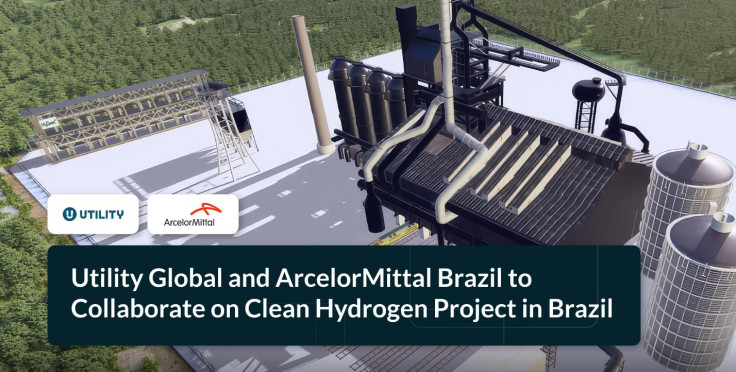Utility Global's Brazil Pilot Proves Hydrogen Innovation Doesn't Have to Wait on Infrastructure
New system turns steel plant waste gas into clean hydrogen, offering a fast, decentralised path to industrial decarbonisation without renewable power dependence

At a time when industrial decarbonization is often viewed as a long-term, capital-heavy endeavor, a new project in Brazil offers a refreshing counterpoint; one built around speed, integration, and existing assets.
This week, Utility Global, a Houston-based hydrogen tech firm, and ArcelorMittal, one of the world's top steelmakers, announced a clean hydrogen initiative at ArcelorMittal's Juiz de Fora plant in Brazil's Minas Gerais state. The project is centered around Utility's H2Gen® system, a modular reactor that creates hydrogen without electricity by converting blast furnace off-gas, typically a waste stream, into high-purity hydrogen and concentrated CO₂.
The system is designed to operate independently of renewable energy sources, relying instead on process gas from the steelmaking operation itself. In turn, the hydrogen can be used to displace fossil fuels in the production process, while the captured CO₂ is easier and cheaper to sequester than typical diluted emissions.
Industrial Hydrogen Without the Wait
While global hydrogen headlines are dominated by billion-dollar hub strategies, the Utility-ArcelorMittal project is something different: decentralized, self-contained, and ready to deploy. The initiative has entered its FEED (Front-End Engineering and Design) phase and aims to produce up to three metric tons of hydrogen per day, an amount that's modest by infrastructure standards but significant in terms of daily industrial usage.
Importantly, this approach skips the need for high-voltage grid access or electrolyzer banks powered by green electricity, two of the biggest barriers to early hydrogen adoption in heavy industry. It's a pragmatic workaround that allows facilities to decarbonize now, without waiting for the rest of the hydrogen economy to catch up.
A Strategic Shift: From Mega Hubs to Micro Assets
This project fits within a broader pivot happening across the industrial energy landscape. As McKinsey & Company noted in a 2024 report, distributed hydrogen production, particularly in industrial zones, can cut total project costs by as much as 30%, due to savings on transport, compression, and storage.
The shift toward on-site hydrogen isn't just theoretical. Earlier this year, firms like BASF and JFE Holdings began exploring decentralized models for internal hydrogen production using waste gases and low-grade fuels. Utility Global's H2Gen® solution falls squarely into this trend; tailored not for massive, export-oriented hydrogen markets, but for on-premise integration with legacy infrastructure.
For industries that can't afford to wait for clean hydrogen pipelines or national delivery networks, systems like H2Gen offer a tangible, near-term answer.
Why Brazil—and Why Now?
Brazil's selection as the launchpad isn't coincidental. With abundant natural resources and supportive policy emerging from its National Hydrogen Strategy, the country is positioning itself as a key innovation market for hydrogen technology.
ArcelorMittal's Juiz de Fora site provides ideal conditions: an existing blast furnace, internal carbon management goals, and access to regional storage options for captured CO₂. The Brazilian government, meanwhile, is actively courting hydrogen-related pilot projects through a mix of incentives and public-private partnerships.
But Brazil's role in this story isn't just geographic—it's symbolic. In many ways, it mirrors the situation in parts of North America where industrial companies are under regulatory and investor pressure to cut emissions, but still lack full hydrogen infrastructure.
Early Action Over Perfect Solutions
Clean hydrogen has the potential to revolutionize emissions-heavy industries—but only if it becomes accessible. Utility Global's approach takes a critical step in that direction by delivering a practical, low-barrier method to integrate hydrogen into steel operations without waiting for government infrastructure timelines.
It may not be the largest project in the global hydrogen economy, but its structure is one of the smartest: purpose-built for a sector that's historically hard to abate, located in a country eager to innovate, and backed by a global player intent on driving change.
For steelmakers and policymakers alike, the message is clear: if hydrogen is to scale, it must start where it's most needed, with solutions that meet industries where they are today, not where we hope they'll be tomorrow.
© Copyright IBTimes 2025. All rights reserved.





















